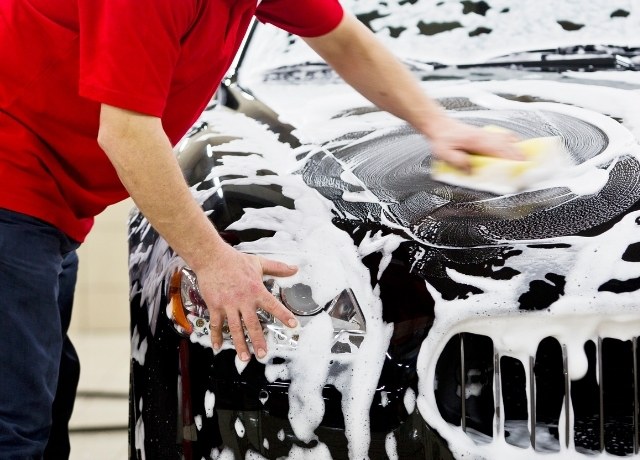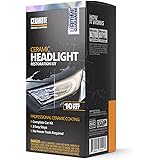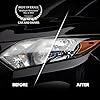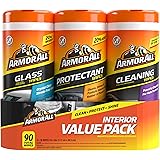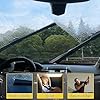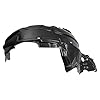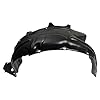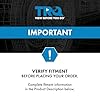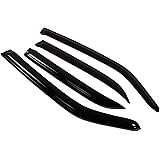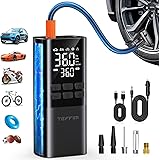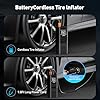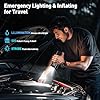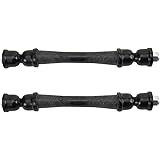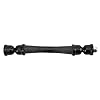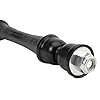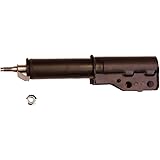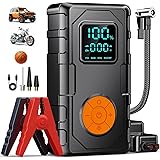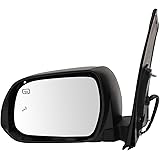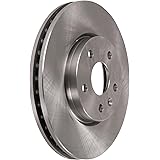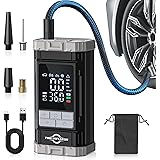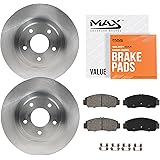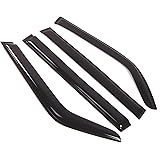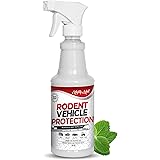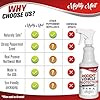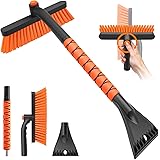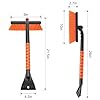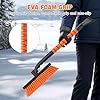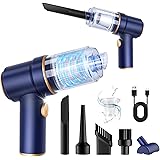Table of Contents
Do you find car washing boring and time-consuming? That’s because you’ve been doing it wrong! It can be quick and easy to keep your car clean even without a hose. For those who don’t have access to outdoor water or want to conserve it, there are many alternatives that work just as well.
All you need is a parking spot with a faucet nearby. You may use either the traditional bucket-and-sponge method or the more efficient two-bucket technique that has been around for decades.
Below we’ll outline four methods on how to wash a car without a hose at all, followed by tips on proper technique. Let’s get right into it.
How To Wash a Car Without a Hose?
While cleaning an automobile without running water may seem like an impossible task, it doesn’t have to be hard if done correctly!
CERAKOTE® Ceramic Headlight Restoration Kit – Guaranteed To Last As Long As You Own Your Vehicle – Brings Headlights Back to Like New Condition – No Power Tools Required – 10 Wipe Kit
All-Purpose Stainless Steel Shower Squeegee for Shower Glass Door with 2 Adhesive Hooks, Bathroom Cleaner Tool Household Window Mirror Squeegee , Cleaning Tile Wall, Car, 10 Inch Silver
BTAS Dielectric Grease for Electrical Connectors Automotive Spark Plug Boot Battery Terminal Marine Dialectical Electronics Wiring Die Electric Contact Silicone Dialectric Grease 1 oz 1 Pcs
Loctite Threadlocker Blue 242 – Removable Thread Lock Glue for Nuts, Bolts, & Fasteners, Medium Strength Screw Glue to Prevent Loosening & Corrosion – 6 ml, 1 Pack
Airmoto Tire Inflator Portable Air Compressor – Air Pump For Car Tires with Digital Pressure Gauge, LED Light and Auto Shut-Off Function – Cordless Pump for Car, Motorcycle, Bicycle, Ball
AstroAI 47.2″ Ice Scrapers for Car Windshield and Extendable Snow Scraper with Foam Grip and 360° Pivoting Brush Head for Christmas Car Auto Truck SUV(Blue)
Armor All Protectant, Glass and Cleaning Wipes, Wipes for Car Interior and Car Exterior, 30 Count Each (Pack of 3)
JINGOU 15″ + 15″ Front Windshield Wiper Blades Compatible with 2007-2017 Jeep Wrangler OEM QUALITY Premium All-Season Automotive Replacement Wipers(Pack of 2)
AUXITO 194 LED Bulb Amber Yellow 168 2825 W5W T10 Wedge 24-SMD 3014 Chipsets Replacement Bulbs for Car Dome Map License Plate Courtesy Step Lights (Pack of 2)
5 PLUS® Windshield Wiper Blades Replacement for 2017-2007 Jeep Wrangler Windshield Wipers (Pack of 3), Automotive Replacement Windshield Wiper Blades For My Car Water Repellent-15″/15″/12″
This guide will teach you how to wash your vehicle in four different ways so that you can keep it looking its best year-round.
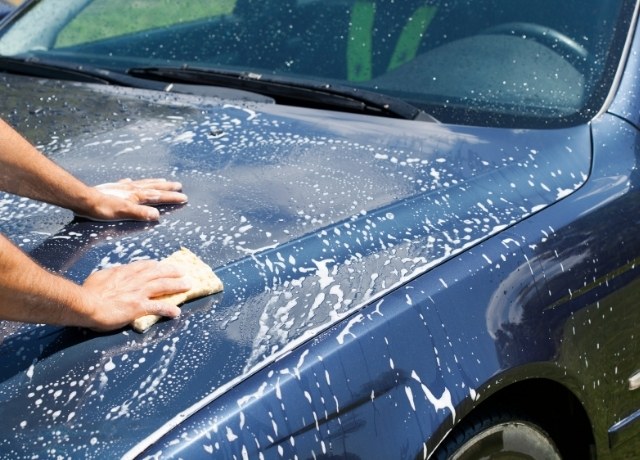
Rinseless Car Wash:
This eco-friendly method cleans cars without rinsing off dirt first! When used along with microfiber towels or waterless detailers specifically designed for this process special solutions wipe away grime from vehicles.
Because of droughts and other environmental factors like these where there isn’t much available plumbing – plus this gives drivers another opportunity help protect our planet as well!
TRQ Front Left Inner Fender Liner Drivers Side Compatible with 2006-2011 Honda Civic HO1248134
Dent Puller,2026latest Upgraded Model Car Dent Puller,3-Pack Car Handheld Puller,Strong Car Dent Remover,Suction Cup Dent Puller and Paintless Car Dent Repair Kit.Suitable for Car Body Dents(orange).
Tuningpros WV-253 Outside Mount Window Visor Deflector Rain Guard Dark Smoke 4-pc Set, Compatible with 2007-2010 Hyundai Elantra
$32.77 (as of December 25, 2025 01:09 GMT +00:00 – More infoProduct prices and availability are accurate as of the date/time indicated and are subject to change. Any price and availability information displayed on [relevant Amazon Site(s), as applicable] at the time of purchase will apply to the purchase of this product.)Tire Inflator Portable Air Compressor – Air Pump for Car Tires,Portable for Car with Pressure Gauge,Tire Inflator with LED Light, for Bike,Motorcycle, Balls
TRQ Front Sway Bar Stabilizer Link Set Compatible with 2015-2021 Chevrolet Colorado 2016-2019 Suburban 3500 HD GMC Canyon
Outside Mount Car Window Rain Guards Compatible with Cadillac CTS 2008-2013 | Tape-On | Rain Shields Window Visor Window Deflectors | Dark Smoke, 4 Pcs Set, WV2M-688
$45.05 (as of December 25, 2025 01:09 GMT +00:00 – More infoProduct prices and availability are accurate as of the date/time indicated and are subject to change. Any price and availability information displayed on [relevant Amazon Site(s), as applicable] at the time of purchase will apply to the purchase of this product.)KPY Rain Guards Shield for 2012-2018 Ford Focus Sedan & Hatchback, Tape-on Mugen Style Window Vent Visors Shades Wind Deflectors, 2012 2013 2014 2015 2016 2017 2018
Gabriel G56700 Ultra Front Strut for 82-92 Chevrolet Camaro; 82-92 Pontiac Firebird (1 Pack)
HoogaLife Car Air Freshener Diffuser 2 Pack Hanging Air Freshener Diffuser – Vanilla Cream Fragrance Oil Air D iffuser for Car, 45+ days Long Lasting Fragrance Made in USA C ar Air Fresheners (V54)
Jump Starter with Air Compressor, Car Battery Jump Starter (8.0 Gas/7.0L Diesel), Battery Jumper Starter Portable Jump Box, 12V Portable Car Jump Starter with Tire Inflator,Gift for Man Father Husband
Equipment Required:
When undertaking a rinse-less wash, these items are necessary;
- Rinse less wash solution.
- Microfiber cloth
- Microfiber wash mitt
- One wash bucket
Using a Rinseless Method to Wash Your Car Without a Hose:
- The Solution: Use the label instructions to dilute your rinseless product before applying.
- Spray and Wipe: Spray a little of the prepared solution onto one panel, then wipe with clean microfiber towels until it looks spotless.
- Two Bucket Method (Recommended): One bucket holds rinseless while another has clean water for rinsing mitt or cloth between wipes so that no contamination occurs during washing which helps prevent surface scuffs forming on cleaned surfaces.
Advantages of a Rinseless Wash:
- Water Conservation
- Eco-Friendly
- Convenience
- Safety
- Efficiency
Disadvantages of a Rinseless Wash:
- Residual Dirt
- Hard-to-Reach Areas
- Not Suitable for Muddy Vehicles
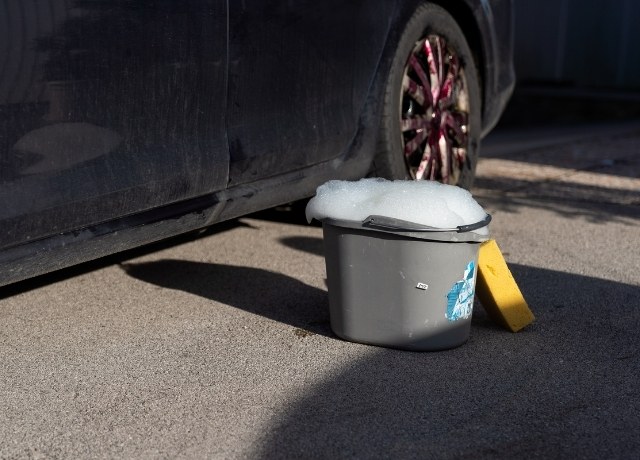
Two Bucket Method:
There are two buckets—one containing cleaning solution and the other with clear water for rinsing. This ensures your mitt is clean before dipping into soap mixture thereby preventing dirt from scratching car paint.
Necessary Tools:
- Pair of Buckets
- Microfiber Wash Mitts
- Microfiber Towels
- Cleaning Solution
YaberAuto 16-in-1 Jump Starter with Air Compressor 8000A 160PSI Car Battery Jump Starter (All Gas/14L Diesel) 12V Jump Box Car Battery Jumper Starter Portable Jumper Cables, Emergency Tool Kit, Gloves
TRQ Front Sway Bar Stabilizer Link Set Compatible with 2015-2021 Chevrolet Colorado 2016-2019 Suburban 3500 HD GMC Canyon
TRQ Driver Side Mirror Assembly Power Heated Blind Spot Foldaway Paint to Match Compatible with 2013-2017 Toyota Sienna
Air Jungles Eleu Pomelo Scent Car Air Freshener Clip, 6 Vent Clips, 4 ml Each, Long Lasting Air Freshener, Up to 180 Days Car Refresher Odor Eliminator
Window Visors Rain Guards for 2015-2025 Ford F150 SuperCrew, Out-Channel Sun Rain Shades Window Vent Deflectors for 2017-2025 F-150 Raptor F250 F350 F450 F550 Super Duty Crew Cab, for Full-Size Cabs
Valvoline Advanced Full Synthetic SAE 0W-20 Motor Oil 5 QT
Amooca Car Seat Headrest Hook 4 Pack Hanger Storage Organizer Universal for Handbag Purse Coat fit Universal Vehicle Car Black S Type
Leather Repair Kit for Car Seats, Furniture and Couch, Vinyl Repair Kit with 3-Step Reinforcement, Easy Instructions to Fix Tears, Holes, Scratches & Peeling, Customizable Colors for Glossy Leather
Bendix Premium PRT5706 Front Brake Rotor for Select Models Chrysler 200, Sebring, Dodge Avenger, Caliber, Jeep Compass, Patriot, Mitsubishi Lancer, Outlander, Outlander Sport, RVR
Aneson Tire Inflator Portable Air Compressor, 2X Fast Air Pump with Digital Gauge 150 PSI, Auto Shutoff for Roadside Inflation, Daily Car Care, Motorcycles, Bikes, and Sports Ball, One-Click Start
Steps to Wash a Car Without a Hose Using the Two Bucket Method:
1. Prepare Your Buckets:
Fill first bucket halfway using warm tap water then add detergent or soap as per manufacturer’s directions. In addition, second container should be filled up completely by running cold clean tap water.
2. Washing Your Car:
Dip mitt in soapy mixture starting top down section by section until entire vehicle is covered like lather foam. Thus, rinse each section off with clean bucket water preventing any dirt removed during previous wash step from being reintroduced again.
3. Use Grit Guards:
If you have them place at bottom of both containers but if not skip this step though try using whenever possible since they trap small particles capable scratching car’s paint.
4. Drying Your Car:
Wipe down your car’s exterior, including the windows and lights, with a lot of soft microfiber towels until all visible moisture is removed. This can later create undesirable swirl marks and streaks.
Advantages of the Two Bucket Method
- Prevents Scratches
- Cost-Effective
- Eco-Friendly
Disadvantages of the Two Bucket Method
- Time-Consuming
- Initial Cost
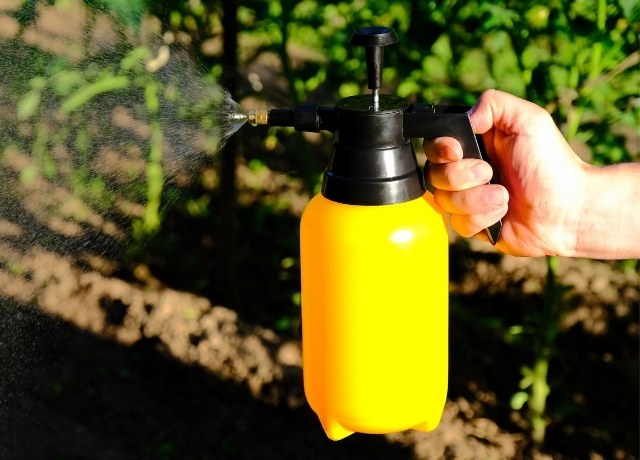
Pump Sprayer Guide for Washing Your Car Without a Hose:
Pump sprayers can replace garden hoses or pressure washers for making snow foam. ONR (Optimum No Rinse) and other no-rinse cleaning solutions work well as tire cleaners.
Auto Amazon Links: No products found. (59 items filtered out)
A larger pump sprayer filled with water is good for rinsing off any pre-soak or degreaser applied with a smaller one.
When you don’t have access to water, pump sprayers are the best way to wash your car without using a hose.
What You’ll Need:
- Water-filled Pump Sprayer
- Snow Foam or Traffic Film Remover
How to Wash Car Without Hose Using a Pump Sprayer:
Cleaning Solution Dilution:
The first step in obtaining the best results is diluting your preferred cleaner in a bucket of water as directed by the manufacturer.
Preparation for Pump Sprayer:
Fill the pump sprayer with this diluted cleaning solution. Then, press the handle repeatedly to make it hard.
Squeeze trigger so that it may work on your car surface. How easy and effective this step is will depend on how good your pump sprayer is.
Solution Application:
Evenly spray over your car’s surface with a cleaning solution. This pre-wash procedure helps loosen dirt and debris which makes contact wash safer and more effective.
Rinse (if required):
For rinsing off any pre-soak or degreaser from car bodywork, use litres of water contained in another bigger-size pump sprayer if need be.
Advantages of Using a Pump Sprayer:
- Accessibility
- Efficiency
- Eco-Friendly
Disadvantages of Using a Pump Sprayer:
- Cost
- Effort
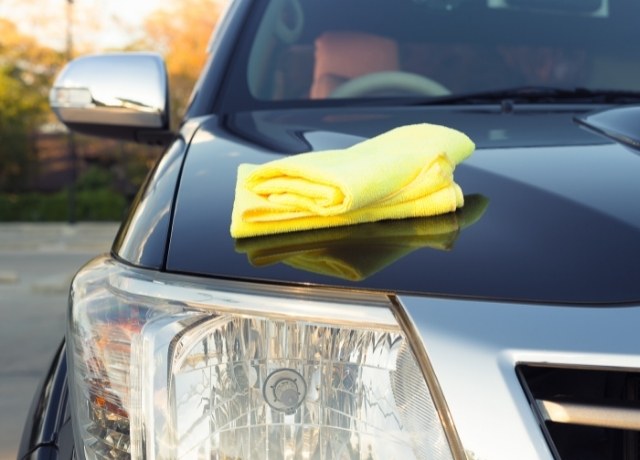
Waterless Car Wash Method:
Using baking soda to recondition your battery is a simple and efficient method that helps keep your battery healthy.
If you don’t want your car to break down while driving or starting, it’s important to clean the terminals of a car’s battery as this will reduce corrosion and increase its lifespan.
Auto Amazon Links: No products found. (82 items filtered out)
What You’ll Need:
- Waterless Car Wash Solution
- Microfiber Towel
Washing Car Without Hose Using Waterless Car Wash Solution
There are only a few steps in this technique:
- Break It Down: Break your vehicle into manageable sections.
- Spray Generously: Generously spray the waterless car wash solution on the targeted area and let it sit for some seconds so that dirt can loosen up.
- Wipe Clean: Use a clean side of the towel each time you wipe off the solution to prevent scratching of surface.
For more information about washing cars with this technique, we have written an extensive guide on it. Make sure to read it for better understanding.
Advantages of Car Cleaning Without Water:
- Eco-Friendly
- Convenient
- Safe
Disadvantages of Car Cleaning Without Water:
- Limitations
- Cost
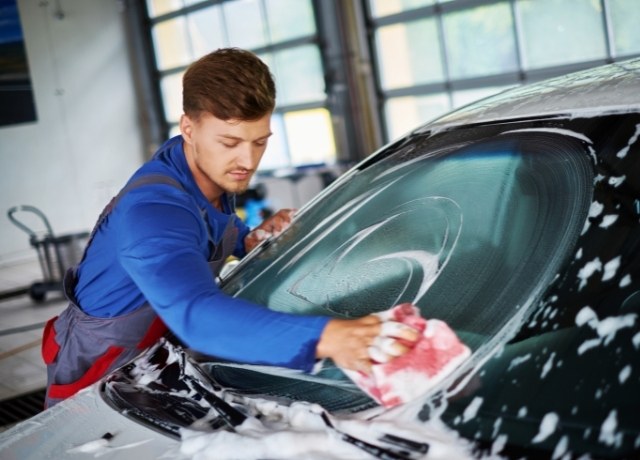
Important Things for Washing a Car Without Hose:
1. Stay Away from Direct Sun
Once the paint dries, move your vehicle out of direct sunlight to avoid unsightly spots. Close all windows and lower the antenna so that water doesn’t enter or damage anything.
2. Choose Cloudy Days Instead of Hot and Sunny Ones:
It’s easier to wash your car on overcast days than it is on scorching sunny ones. On sunny days, water evaporates quickly leaving marks on the vehicle’s surface; however, cloudy conditions allow for more thorough cleaning without streaks.
3. Clean Wheels First:
Wheels should be cleaned first because they are filthy. Dust accumulates in between wheel parts which can make them look unattractive and work less efficiently. Once the wheels are clean then you can move onto washing the rest of the car.
4. Rinse Out The Microfiber Wash Mitts:
Microfiber wash mitts must remain clean! Let them soak in hot water and scrub off any dirt that may have gotten trapped inside their fibers during use this will prevent dirt from getting back into your vehicle while cleaning.
5. The Inside Should Be Clean Too:
Just like its exterior, a car’s interior needs to stay tidy as well! Start by removing trash or other clutter laying around before moving onto deep-cleaning every surface including flooring materials such as rubber mats which should be rinsed thoroughly after being scrubbed with soap.
6. Keep It Up Regularly:
To stop rust forming on your vehicle’s outer layer/underbody you need to wash it regularly remembering also that paint is damaged by dirt too – meaning if there is lots of filth built up over time then getting rid of it will become increasingly difficult!
Frequently Asked Questions:
Q: How can I wash my car without a hose?
A: There are different ways to clean your car without a hose. One of them is using waterless cleaning products.
These sprays eliminate dirt without any water involved. Just spray and wipe off with a microfiber cloth.
You can also use eco-friendly car washing solution that requires minimal rinsing in a bucket filled with water.
Q: Can I wash my car with a bucket of water?
A: A bucket can be used for washing your vehicle. Use soapy water in one bucket and rinse it in another one filled with clean water.
Then, use sponge or cloth to scrub the car before rinsing it off again using fresh water. This method helps save the environment as well as conserve water.
Q: How to wash a car without access to water?
A: If there isn’t any nearby source of H2O, consider getting yourself some good quality no-rinse wash solution like these cleaners which work wonders on vehicles without needing any liquid whatsoever Spray them onto surfaces then wipe away dirt trapped inside microfibers – easy peasy lemon squeezy!
Q: Do I need a hose to wash my car?
A: Not at all! Buckets filled with clean/dirty waters or even better; chemical-free cleansers work just fine too.
These options are time savers and environmentally friendly because they prevent wastage during such activities
Q: Is it possible to use a garden hose to clean my car?
A: Yes, although this is not the best way of saving water.
If you do opt for a hosepipe, try fitting a nozzle which lets you control flow in order that wastage is reduced.
Another option would be using a bucket wash or even better – an eco-friendly waterless car product.
Conclusion:
To sum up, these dry car washing methods are not only feasible but also easy and effective. From the conventional method to new inventions such as:
- No-rinse car washes
- Two bucket technique
- Pump sprayers
- Waterless car washes
Eco-friendly car cleaning practices can be customized to suit your requirements. Each has its own pros and cons, but they all look after the outer appearance of your vehicle.
If you have limited water supply or want something more environmentally friendly, use these hose-free washing methods instead.
Experiment with different ways to find out what works best for keeping your car shiny.

